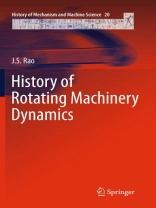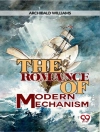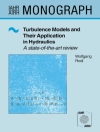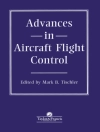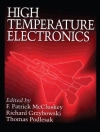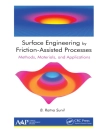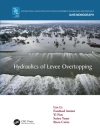This book starts with the invention of the wheel nearly 5000 years ago, and via Archimedes, Aristotle and Hero describes the first practical applications such as water wheels and grinding wheels, pushing on to more rigorous scientific research by inquiring minds such as Leonardo da Vinci and Copernicus in later ages. Newton and Leibniz followed, and beam structures received maximum attention three centuries ago. As focus shifts and related disciplines such as mathematics and physics also develop, slowly turbomachines and rotor and blade dynamics as we know the subject now take shape. While the book traces the events leading to Laval and Parsons Turbines, the emphasis is on rotor and blade dynamics aspects that pushed these turbines to their limits in the last century. The tabular and graphical methods developed in the pre-computer era have taken different form in the last fifty years through finite element methods. The methods evolved in the last century are discussed in detail to help modern day designers and researchers. This book will be useful to young researchers and engineers in industry and educational institutions engaged in rotor and blade dynamics work in understanding the past and the present developments and what is expected in future. Faculty and industry engineers can benefit from this broad perspective history in formulating their developmental plans.
विषयसूची
Foreword; Preface; Acknowledgements; 1 Beginnings of the Wheel; References; 2 Science before the Medieval Period; References; 3 Water Wheels; References; 4 Wind Mills; References; 5 Renaissance and Scientific Revolution; References; 6 Renaissance Engineers; References; 7 Industrial Revolution; References; 8 Turbomachines; References 9 Fundamentals of Elasticity; References; 10 Energy Methods; 10.1 Euler—Lagrange Equations; 10.2 Lagrange Method; 10.3 Rayleigh’s Energy Approach; 10.4 Ritz Method; 10.5 Lagrange Method for Vibration Problems; 10.6 Galerkin Method; 10.7 Hamilton’s Principle; 10.8 Complementary Virtual Work; 10.9 Hellinger—Reissner Variational Principle; 10.10 Hu—Washizu Principle; 10.11Different Theories of Torsion of Rods; 10.11.1 Coulomb (1784) Elementary Theory , see Timoshenko and Goodier [42] for Circular Rods; 10.11.2St. Venant (1853) Theory, see Todhunter [43] and Timoshenko and Goodier [42] for Circular Rods; 10.11.3 Love’s (1944) Theory; 10.11.4 Timoshenko (1945) — Gere’s (1954) Theory; 10.11.5 Reissner (1952) and Lo—Goulard’s (1955) Theory; 10.11.6 Barr’s (1962) Theory; 10.11.7 Refined Theory by Rao (1974); References; 11 20th Century Graphical and Numerical Methods; 11.1 Stodola—Viannello (Rayleigh’s Maximum Energy) Method in Graphical Form; 11.2 Stodola—Viannello Iterative Method in Tabular Form; 11.3 Dunkerley’s Method; 11.4 Proof of the Dunkerley Formula by Blaess [1]; 11.5 Hahn’s Proof Using Matrix Algebra [3]; 11.6 Holzer Method for Torsional Vibration; 11.7 The Myklestad Method [7, 8]; 11.8 Prohl’s Method [9]; References; 12 Matrix Methods; 12.1 Torsional Vibration Systems; 12.2 Far-Coupled Systems; 12.3 Gräffe’s Method of Successive Approximations; 12.4 Matrix Iteration Method; 12.5 Method of Priebs [10]; 12.6 The Holzer Method (Close Coupled Systems) in Transfer Matrix Form; 12.7 Myklestad—Thomson (1949, 1953) — Prohl Methods in Transfer Matrix Form for Far-Coupled Systems; 12.8 A Brief Note on Computersand Evolution; References; 13 Finite Element Methods; 13.1 Beam Finite Element; 13.2 Tocher Triangular Plate Element (1962); 13.3 Shell Element; 13.4 Interface Damping through Finite Element Analysis; 13.5 Illustration of Turbomachine Blade Analysis using Commercial Codes; References; 14 Rotor Dynamics Methods; 14.1 De Laval Model; 14.2 Jeffcott Rotor Analysis; 14.3 Fluid Film Bearings; 14.4 Oil Film Instabilities; 14.5 Quality Factor; 14.6 Gyroscopic Effects; 14.7 Internal Friction, Hysteresis; 14.8 Shafts with Gravity and Variable Elasticity; 14.9 Misalignment; 14.10 Bowed Rotors; 14.11 Variable Inertia; 14.12 Seals and Instabilities; 14.13 Steam Whirl; 14.14 Cracked Shafts; References; 15 Transfer Matrix Methods; 15.1 Torsional Vibration due to Short Circuit of Generators; 15.2 Transfer Matrix Method for Lateral Vibrations of Rotors; 15.3 Twin Spool Rotor Analysis; References;16 Finite Element Methods for Rotor Dynamics; 16.1 Nelson’s Beam Element; 16.2 Geared Rotors and Chaos; 16.3 Solid Rotors; 16.4 Two Spool Aircraft Engine [21]; 16.5 Cryogenic Pump Rotor Dynamic Analysis; References; 17 Bladed Disks; 17.1 Armstrong’s Analysis for Tuned Systems; 17.2 Ewins’ Analysis; 17.3 Mistuning Arrangement; 17.4 Damping; 17.5 Micro-Slip Damping (Fretting Fatigue); References; 18 Lifing; 18.1 High Cycle Fatigue (HCF) Life Estimation; 18.2 Low Cycle Fatigue (Strain Based Life Estimation); 18.3 Linear Elastic Fracture Mechanics; References; 19 Optimization; 19.1 Shape Optimization; 19.2 Weight Optimization; References; 20 Concluding Remarks; Index.
